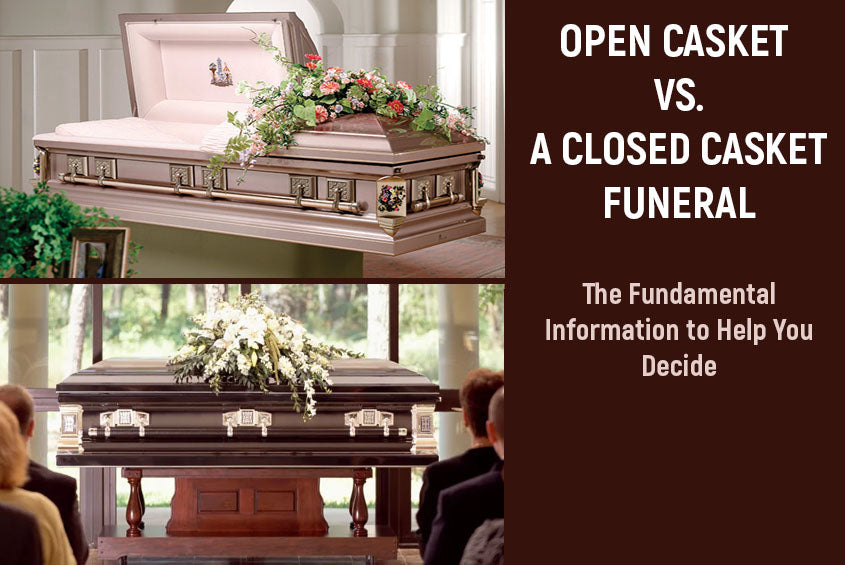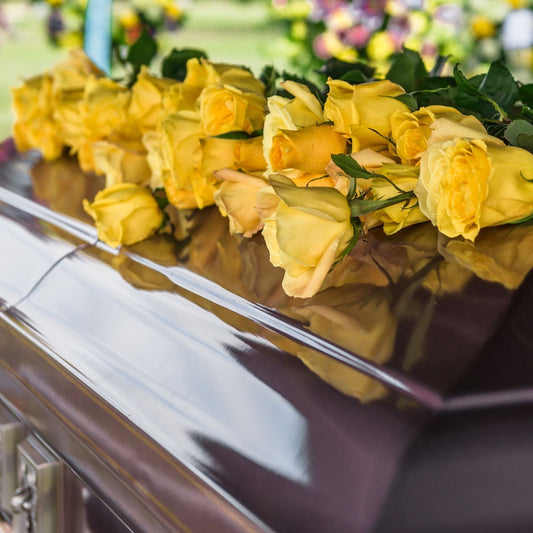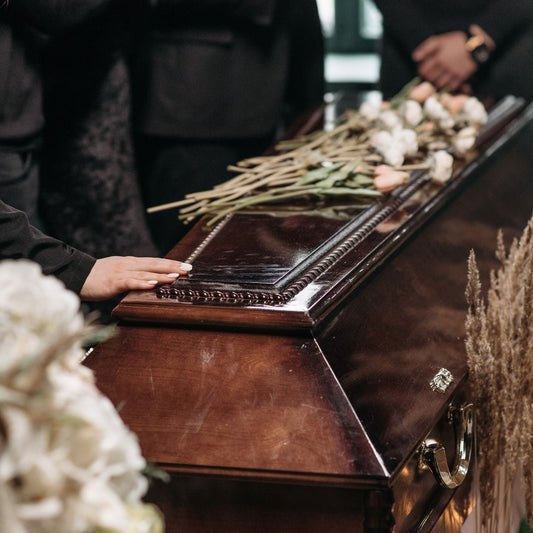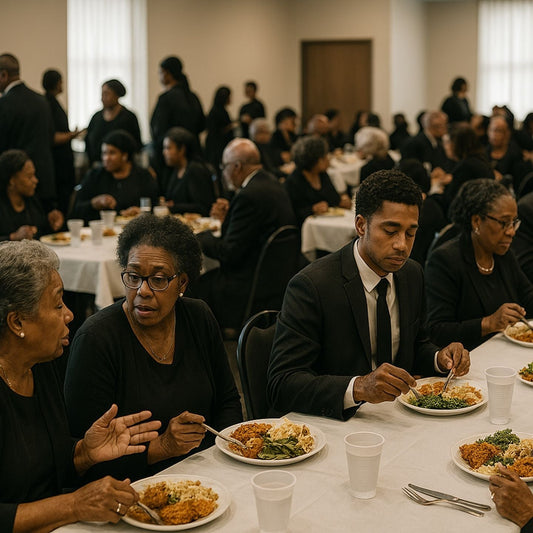
Open casket vs. a Closed Casket funeral- The Fundamental Information to Help You Decide
There are many things to address when dealing with a funeral. Deciding between an open casket or a closed casket is just one of the many. Sometimes, a closed casket is the only option (we're going to come back to that), but most of the time, you need to decide between the two kinds.
Read also: Half-couch Vs. Full-Couch Caskets & Everything You Want to Know about Open-Casket Funerals
For instance, if children will attend the funeral service, seeing someone they really cared about and loved may be incredibly difficult. Therefore, a closed casket will be the better choice. Children and highly emotional people will always find it consuming and difficult to bear the view of the deceased. The sealed casket service is the wiser option in such situations.
What are the fundamental aspects of an open casket funeral?
The term pretty much says it all, and in the open casket funeral, the body of the deceased is shown for viewing.
For completing the open casket funeral, the funeral service must take specific steps:
- They take care of the embalming of the body. It’s natural for the body to start decomposing quite fast after death. When you’re planning for others to see the deceased’s body, the embalming cannot be skipped.
- The body has to be dressed. In many cultures, it's the family members that ensure the clothing for the deceased. They typically select pieces of clothing that the dead was found when he/she was living. Sometimes, the deceased may have experienced fast weight loss/weight gain just before the death, in which some clothing alteration may be required. There's also the scenario when new clothes have to be bought by relatives.
- The funeral home can also use some makeup on the body. One member of the funeral home's team will apply makeup on the shown skin to make it look healthier. He/she can also add some color to the cheeks and lips, helping the body to resemble a life-like look.
- The people from the funeral home will also take care of the deceased’s hair. More often than not, they will ask for a picture of the deceased to see how he/she used to style the hair.
After the body is prepared, the body of the deceased will be laid in a casket. Typically, only the top half of the casket is going to be open, allowing the people attending the funeral to see it. The head, the shoulders, and the chest of the deceased will be visible.
Not everyone agrees that the open-casket funerals are standard. Many notices that the body is displayed throughout the wake/vigil/visitation, but not throughout the funeral service per se.
Therefore, you can leave the casket open for the moment when people attend the funeral, asking the funeral directors to close it when the service starts. You can also leave it open throughout the funeral service, too- the decision belongs to you!
Some would instead leave the casket open only for the close members of the family to take a last look at the deceased. They simply close the caskets when other people attend the service. Societal norms, personal preferences, and religious traditions will play a role when deciding on which style you use in the end.
How to describe a closed casket funeral in a nutshell?
Just like in the case of an open-casket funeral, the closed casket funeral refers to the body not being shown throughout the funeral service. Therefore, nobody is going to see the body of the deceased. The body was shown, however, throughout the vigil, the wake, or visitation. For specific reasons, though, the casket is closed for the funeral service.
When the body is never shown, it may or may not have been through an embalming process. Embalming is required if the body of the deceased will be displayed at some point throughout the funeral services.
The etiquette on open casket funeral- here's what's to know
In the case of open-casket funeral services, the body will be embalmed, dressed up so that it presents a life-like appearance. It's an overwhelming moment, so you should brace yourself for it.
When you go with an open casket funeral, here are some do’s and don’ts to remember:
- You should try to stay close to the casket so that the family doesn’t get the impression that you’re grossed out by the deceased. When you no longer feel comfortable, you should stay away from it and remain seated.
- Under no circumstances is allowed to touch the body. For preventing this kind of incident, some caskets feature a glass.
- Try your best not to comment on the appearance of the deceased. Keep in mind that the dead cannot look exactly like he/she used to look when alive. Don’t make any comments at all.
- Give space to family members. It's perfectly understandable why the family members are unable to stay away from the casket. Give them the space they need, while not pushing through the guests.
Viewing the deceased is seldom easy or comfortable, especially if you were close. If you don't know how you're going to react, it's a good idea to ask someone in the family or a friend to stand by you for emotional support. Every mourner has their unique way of paying respects to the dead, and people will understand you when you're incapable of seeing the deceased in the open funeral casket.
Why would you decide on a closed-casket funeral?
No matter if you’re planning the funeral for someone in your family or for your own, you should give it a good thought before choosing.
Most of the time, when we think about someone selecting the closed-casket funeral, the state of the body jumps to our mind as the main reason for it. A chemical accident or a body mutilated in a fire do alter the body of the deceased. But it's not a common scenario.
On the contrary, many people wish to have a closed casket funeral for honoring the deceased, no matter the state of the body. There's also the category of people who see the open casket as an invasion of intimacy. It's disrespectful for both the deceased and the family of the dead. Truth be told, it's still a personal thing, and it can cause a lot of disagreement within a family when preparing the funeral. Once more, we notice the importance of pre-need funeral planning, especially within a family that typically argues on everything.
Religion is another aspect that matters when choosing a closed casket funeral. The majority of religions will allow the choice of having the viewing or the wake up to the family members. However, some exceptions don't endorse the open caskets.
For instance, Jewish funerals don’t include a viewing, but have the “keriah”. It’s a ritual where the close family gathers before the service.
The Muslim religion doesn’t allow an open casket viewing as well, with bodies being buried right after death.
Last, but not least, the Quaker funeral also has strict rules about the viewing and the wakes, allowing only the closed casket funerals.
Even if the religion isn’t your primary reason for which an open casket doesn’t interest you, there are plenty of other reasons that count too.
With many people feeling uncomfortable about the embalming process, it’s totally understandable why the closed casket funeral becomes the only choice. Even if the funeral home's staff is well trained and experienced, making the deceased to have a life-like appearance (without losing a natural feeling), it's perfectly natural for people to avoid the open-casket funeral.
When you go with a closed casket funeral, you show a lot of consideration to the people attending the funeral service. At the end of the day, people react differently to the looks of dead bodies.
All in all, the wish for a closed casket has more psychological reasons than we’d think. Even if people believe that the open casket helps the mourners to accept death and say their final goodbye to the deceased, studies are proving wrong. A closed casket gives the mourners a sense of finality, easing out the acceptance of death.
More than anything, it doesn't matter why you choose a closed casket funeral. It's far more vital that it respects the last wishes of the deceased.
Open or closed casket funeral? The differences to help you understand
Even if we went over the details on each type, listing things also seems to help a lot more. Here’s our list when comparing the two:
1. Not everyone attending the service is willing in seeing the deceased
There's always the category of people not wishing to see the body of the deceased. Maybe they're uncomfortable with seeing a dead body, or perhaps they just don't want to know the one they used to love as dead.
For no matter the reasons, though, it's better that you give them the possibility of not seeing the body. In most situations, the casket will be the focal point of the funeral service. When mourners are entering from the back, one that doesn't want to see the body can actually stand toward the rear.
2. Some mourners want to see the body of the deceased
Even if we don’t deal with death until later in our life (hopefully), many of us know for sure about the practice of seeing bodies after death. For many religions and cultures, the method seems quite weird. After all, there's nothing natural about applying makeup on a dead body, for making it look "alive."
However, it's not easy for people to see someone they've cared about like a dead person. They need closure, and taking one last look at the body gives them closure.
Should you decide to go with a closed casket funeral, some of the mourners will end up frustrated and upset for not being able to see the deceased one last time. Even it's not appropriate, and some may want to kiss the hand of the deceased or simply touch it.
3. It’s difficult to choose between the two
When the appearance of the deceased has been dramatically changed before dying, choosing between the two is more complicated. Chemotherapy leaves deep marks on people, and the loss of hair is really heavy for the family. Sometimes, the staff members of the funeral home can do their best to make the deceased look life-like. Despite their efforts, some dead don't look like they used to at all.
Therefore, it\s better to honor and respect the deceased and have a closed casket funeral instead.
4. At times, the closed casket funeral is the only choice
People die too often in traumatic accidents or on the cause of some injuries. If so, the body may not allow a display at the funeral service. A body that was burned or drowned doesn't allow an open casket. It's the same with infants, and the picture of open infant caskets is unbearable. Most of the infant caskets are closed throughout the funeral.
The funeral directors are experienced so they can give you a piece of advice. After all, it’s not wise to go with an open casket funeral when the body is decomposing or intensely damaged. It’s traumatic for anyone attending the funeral service.
5. The culture can decide the type
Go back to see details on which religion as for a closed casket funeral. However, not all Jews or Muslims go with a closed casket funeral.
The culture, personal values, and the country of origin are also significant when making that call.
6. The closed casket funeral is cheaper than the open casket type
It’s emotionally draining to plan a funeral. More often than not, the mourners planning the funeral don’t have time to address financial issues as they cannot deal with their emotions. They’re willing to pay any amount of money just to get it over with.
With embalming being necessary for open-casket funeral and quite expensive too, it makes sense that the open casket funeral is pricier than the closed casket type. Even though it's unpleasant to think it, sometimes your wallet just doesn't allow an open casket funeral.
t





